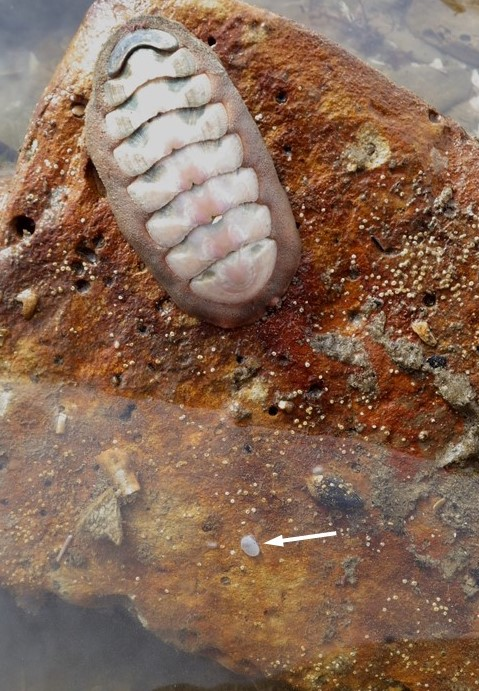Identifying a distinct species is always thrilling, but so is discovering one that was thought to have died out with time that passed. A little clam that was previously only known from fossils was recently discovered alive at Naples Point, approximately up the coast near UC Santa Barbara. The studies co-author, Jeff Goddard, a research assistant at the University of California, Santa Barbara's Marine Science Institute said that it's not all that typical to find living a species originally known from the fossil record, even in a location as well-known as Southern California. The discovery has been published in the journal Zookeys.
It doesn't go back as far as the legendary Coelacanth or even the deep-water mollusk Neopilina galatheae, which represent an entire class of species thought to have vanished 400 million years ago, but it does date back to the period of all those magnificent animals caught mostly by La Brea Tar Pits.
On a November day low tide, Goddard was flipping over pebbles at Naples Point looking to hunt nudibranch sea slugs when he noticed a pair of tiny, transparent bivalves. Their shells were just 10 mm long, he noted. But as they stretched and began waving around a brilliant white-striped leg longer than its shell, he realized he had never encountered such species before.
Deep-Water Mollusk Found in a Low Tide
Goddard, who has spent many years in California's intertidal ecosystems, including several years at Naples Point, was taken aback by this. He quickly stopped everything he was doing to photograph the fascinating creatures up close.
Goddard opted not to capture the creatures, which seemed to be rare, despite having high-quality photographs. He forwarded the photographs to Paul Valentich-Scott, curator emeritus of malacology at the Santa Barbara Museum of Natural History, after determining their taxonomic family. Valentich-Scott recalls how he was shocked and fascinated. Along the American shore, he was well familiar with this genus of bivalves (Galeommatidae), but he had never seen anything like that before.
He listed a few options to Goddard but also said he'd need to view the animal in person to make an accurate determination. So Goddard went back towards Naples Point to get his clam. But after two hours of scouring only a few square kilometers, he still hadn't found his reward. Many more times, the species would evade him.
After nine journeys and nearly giving hope, Goddard turned over the other rock and discovered the haystack with the needle in March 2019. A solitary specimen, among two little white nudibranchs as well as a huge chiton. Valentich-Scott would finally receive his specimen, and the two could begin working on identification.

It takes a keen eye to spot the minuscule clam (bottom center), sitting next to this chiton in the tidepools of Naples Point. A new study uncovered a rare fossil of deep water mollusk that is alive.
The Genus of Found Deep-Water Mollusk
When Valentich-Scott first laid his hands upon that shell, he was even more startled. He knew it was related to a family with only one individual mostly in the Santa Barbara locale, but this shell matched none of them. It presented the thrilling prospect of discovering a new species.
This was the beginning of 'the quest' for Valentich-Scott. When he suspects the existence of a new organism, he searches the research journals spanning 1758 to the current time. It might be an intimidating undertaking, but with practice, it can be completed fast. The two scientists decided to investigate an intriguing allusion to an ancient species. They found images of a bivalve Bornia cooki in the publication that described the species, according to Phys' report. It looked to be the same as the present specimen. If verified, Goddard would have discovered a living fossil rather than a new species.
It is worth mentioning that the biologist who named the genus, George Willett, believed he had dug and inspected around 1 million fossil samples from the same region, Los Angeles' Baldwin Hills. Having said that, he never located B. Cooki by himself. Instead, he dubbed one after Edna Cook, a Baldwin Hills enthusiast who discovered the only two known specimens.
Other Specimens Found in Naples Point
Willett's initial specimen (now known as Cymatioa cooki) was sought by Valentich-Scott from the Natural History Museum of Los Angeles County. This item, known as the "type specimen," serves to designate the species, making it the last judge of the clam's existence.
Meanwhile, near Naples Point, Goddard discovered another specimen - a solitary empty husk in the sand beneath a boulder. Valentich-Scott decided that the samples from Naples Point and Willett's fossil were identical species after closely examining them.
Despite its small size and obscure location, all of this raises the issue concerning how the clam escaped notice for so long. He believes the clams got here as planktonic larvae brought up first from the south during maritime heatwaves from 2014 to 2016. Many marine species were able to expand their populations northward as a result of this, including many that were discovered especially at Naples Point. This might explain why no one has recognized C. cooki depending on the animal's development rate and lifespan. Before 2018, there was C. cooki on the site, including Goddard's.
The Coastline of Baja California contains extensive tidal boulder beds that reach for kilometers, as per Goddard, and he assumed Cymatioa cooki lives in close connection with species digging beneath such rocks.
RELATED ARTICLE: Why Did the World's Largest Mollusk Grew Excessively?
Check out more news and information on Mollusk in Science Times.














